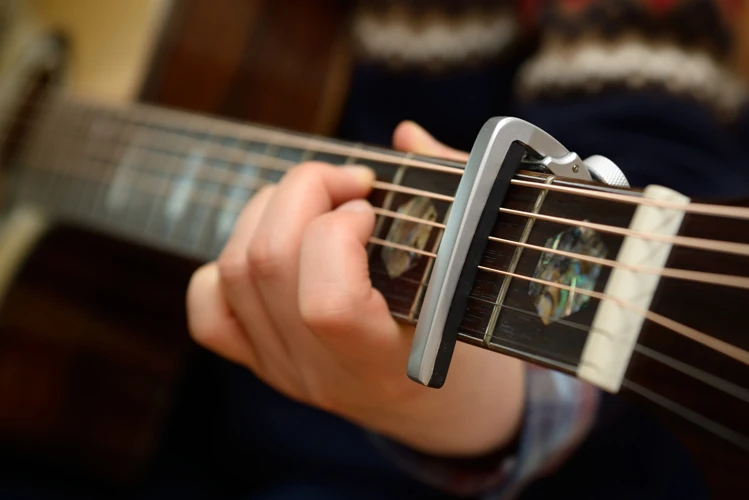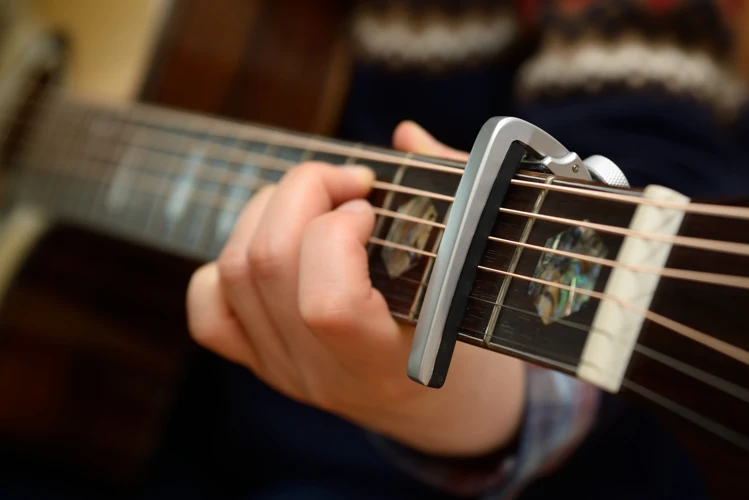Country music is a genre that is deeply rooted in tradition and storytelling. It is a genre that often features acoustic guitars as the main instrument, creating a sound that is both heartfelt and authentic. One tool that has become essential for country guitarists is the capo. A capo is a small device that is clamped onto the neck of a guitar, allowing players to change the pitch of the instrument without having to retune. In the world of country music, the capo plays a crucial role in creating the signature sound that defines the genre.
The Basics of a Capo
A capo is a simple yet powerful tool that is used by guitarists to alter the pitch of the instrument. It works by pressing down on all the strings at a particular fret on the neck of the guitar. This effectively shortens the length of the strings, causing them to vibrate at a higher pitch. By using a capo, guitarists can play open chords in different keys without having to learn new chord shapes or re-tune their instrument.
Types of Capos
There are several types of capos available on the market, each with its own unique features and benefits. The most common type is the spring-loaded capo, which can be easily clamped onto the neck of the guitar with one hand. Another popular type is the screw-on capo, which provides a more secure grip and allows for greater control over the amount of pressure applied to the strings. Some guitarists prefer the partial capo, which covers only a few strings, allowing for more creative chord voicings.
Benefits of Using a Capo in Country Music
In the world of country music, the capo is a versatile tool that offers a wide range of benefits for guitarists. One of the main advantages of using a capo is the ability to easily change keys without having to learn new chord shapes. This is particularly useful for country musicians who often play in different keys to accommodate the range of vocalists or to suit the mood of a particular song.
Another benefit of using a capo in country music is the ability to create unique and interesting chord voicings. By placing the capo at different positions on the neck of the guitar, players can experiment with different sounds and textures, adding depth and complexity to their playing. This is especially useful for country guitarists who want to create a signature sound that sets them apart from other musicians.
Capos and Songwriting
For country songwriters, the capo is an invaluable tool that can help spark creativity and inspire new ideas. By using a capo, songwriters can quickly explore different chord progressions and melodies, allowing them to break out of familiar patterns and develop fresh and original songs. The ability to easily change keys with a capo can also help songwriters find the perfect vocal range for a particular melody, ensuring that the song is both comfortable to sing and emotionally resonant.
Capos and Fingerstyle Playing
In addition to its role in changing keys and creating unique chord voicings, the capo is also a valuable tool for country guitarists who specialize in fingerstyle playing. By using a capo, fingerstyle players can experiment with different tunings and create rich, resonant sounds that are not possible with standard tuning alone. The capo allows players to explore a wide range of tonal possibilities, from bright and shimmering to warm and mellow, enhancing the emotional impact of their playing.
Capos and Live Performance
In a live performance setting, the capo is an essential tool for country guitarists who need to quickly adapt to different keys and arrangements. By using a capo, musicians can seamlessly transition between songs without missing a beat, ensuring that the music flows smoothly and effortlessly. The capo also allows for greater flexibility in setlists, as guitarists can easily change keys on the fly to suit the needs of the audience or the venue.
Capos and Collaborations
For country musicians who collaborate with other artists, the capo is a valuable tool that can help bridge the gap between different playing styles and preferences. By using a capo, guitarists can easily match the key and chord shapes of their fellow musicians, creating a cohesive and harmonious sound. The capo also allows for greater creativity and experimentation in collaborative settings, as musicians can quickly try out new ideas and explore different musical avenues.
Choosing the Right Capo
When it comes to choosing a capo for country music, there are a few key factors to consider. First and foremost, it is important to select a capo that is easy to use and provides a secure grip on the neck of the guitar. Look for a capo that is made from durable materials and is designed to withstand the rigors of regular use.
Consider the type of capo that best suits your playing style and needs. If you prefer quick and easy changes, a spring-loaded capo may be the best option. If you require more precise control over the pressure applied to the strings, a screw-on capo might be a better choice. Experiment with different types of capos to find the one that feels most comfortable and natural for your playing.
Looking to enhance your country music guitar playing? Check out our articles on the benefits of using capos for country music guitar, essential guitar exercises for country musicians, protecting guitar cases and gig bags for country music, best capos for country guitar, and alternative string materials for country music. Explore how guitar capos can take your country music playing to the next level!
Conclusion
In conclusion, the capo is a versatile and indispensable tool for country guitarists. From changing keys and creating unique chord voicings to sparking creativity and enhancing live performances, the capo plays a crucial role in shaping the sound and style of country music. Whether you are a beginner or a seasoned professional, incorporating a capo into your playing can open up a world of possibilities and take your music to new heights. So next time you pick up your guitar to play some country tunes, don’t forget to grab your capo and explore the endless potential it has to offer.


